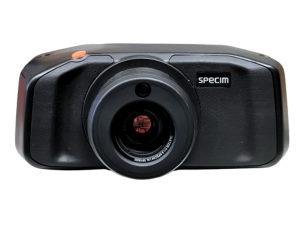
hyperspectral imaging

hyperspectral imaging
About Us

The facility of the hyperspectral imaging laboratory (hyper-lab) is equipped with both instrumentations and setting to support both in-house and remote sensing measurements on different targets. We have the capability to integrate imaging and signals data for different contexts and scenarios: from biomedical applications to cultural heritage, passing through food and packaging quality and biodiversity monitoring and conservation.
The hyper-lab facility can provide high-quality hyperspectral images and versatile methods for characterizing objects to suit your needs. Hyperspectral imaging is a versatile image technology that collects and processes information by exploiting light-matter interaction between a light source and a target, to obtain images and spectra allowing to deepen the knowledge of matter signatures.
The hyperspectral imaging system combines the benefits of digital imaging and a spectrometer providing both spatial and spectral information about the object’s physical and chemical properties. The analysis of hyperspectral images allows to evaluate spectral response detecting and classifying objects.
Hyperspectral imaging has numerous applications, ranging from biomedical research to cultural heritage, food and packaging quality, biodiversity monitoring, and conservation.
Our team of researchers will help you customize the image acquisition from specific user requirements to data analysis
Applications
Biomedical Application

Biomedical Application
At a deep level, hyperspectral imaging is widely used in surgery image-guided other than medical analysis. On the other side, at macroscopic level, the hyperspectral imaging is used to detect skin abnormality due to inflammation (psoriasis, atopic dermatitis) or to pathological mutations.
Cultural heritage

Cultural heritage
VIS-NIR electromagnetic spectrum hyperspectral imaging is one the most widely used non-invasive tools for in situ analysis of cultural heritage artifacts surfaces.This technique can be combined with X-ray Fluorescence, Raman spectroscopy, or X-ray diffraction to characterize the physical-chemical composition of the outer layers of the sample (e.g. painted surface). These measurements allow both a characterization of the works of art and support the design of projects aimed to the conservation and, eventually, restoration of the items.
Food and packaging quality

Food and packaging quality
Hyperspectral imaging is used to detect defects and abnormalities in food products that are not visible to the human eye. It allows to obtain the chemical information across the entire product stream in industrial production, increasing the production process’s efficiency and preserving food quality.
Furthermore, the possibility of monitoring airtight packaging allows to prevent oxygen and moisture from entering the package and damaging the contents, thus improving the conservation of food.
Hyperspectral imaging is a well-established method for measuring, inspecting, sorting, and grading food products in different stages of the supply chain as it gives reliable information in a rapid, non-destructive and hygienic way, requiring no sample preparation.
Hyperspectral imaging is typically used to study food chemical composition, adulteration, ripeness, freshness, or bruising on various fruits and vegetables, seed classification, detection of foreign objects, or different varieties or blend identification.
Biodiversity monitoring and conservation

Biodiversity monitoring and conservation
Hyperspectral imaging performed in remote sensing can be used in smart agriculture to monitor the status of crops (humidity, chlorophyll production, level of senescence, etc) on large fields. Moreover, acquisitions in remote sensing allow for monitoring the diffusion of local species and to preserve the habitat from invasion by foreign species.
Finally, a hyperspectral camera can be used in the laboratory for experiments on plant dynamics and response to external stimuli.
Facility
Hyperspectral camera on UAS system
Portable Hyperspectral camera
Services
Price List
Specim IQ camera 400-1000nm
-
minimum cost per hour* (€/h)
Data Analysis standard
-
minimum cost per hour* (€/h)
Additional Services
-
image acquisition set
-
image acquisition spectral range
-
measurement campaign
-
analysis type
